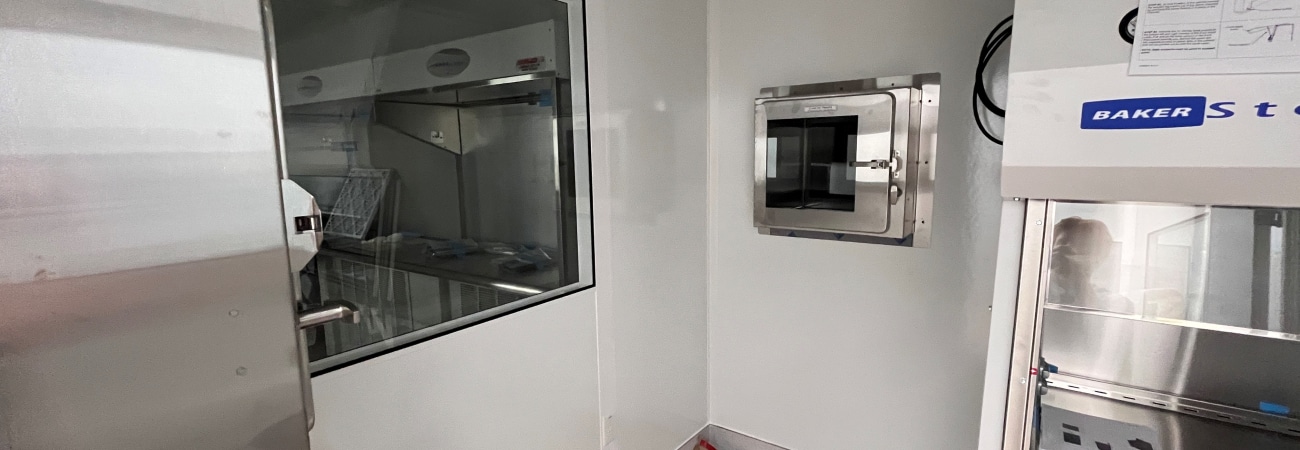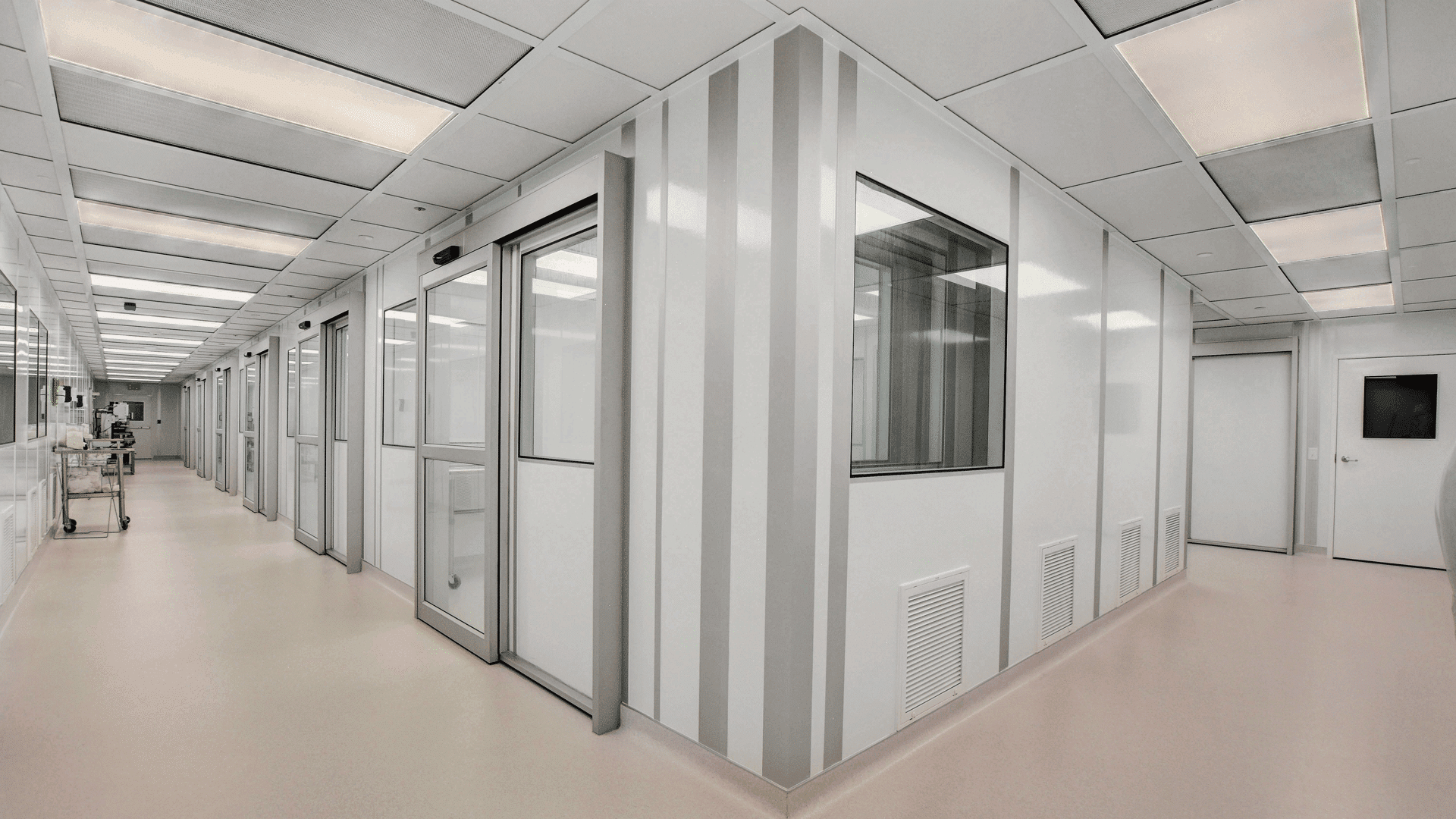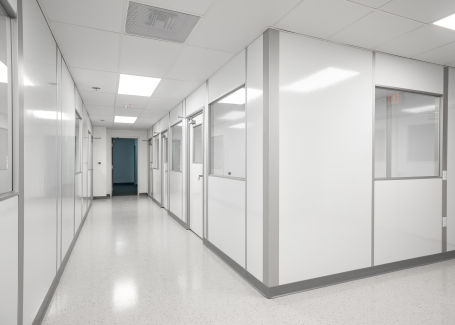What if a small design change could significantly reduce contamination in your cleanrooms? One of the most overlooked hotspots for particle buildups are the sharp 90° angles where walls meet ceilings and floors. Such places are generally hard to reach, difficult to clean, and yet still harbor lingering particles. So, what’s the solution? In this article, we’ll look at coving, a simple yet powerful feature used in cleanrooms.
What is Coving Used for in Cleanrooms?
Coving is a curved or rounded transition between two or more surfaces, such as between flooring and walls, in a cleanroom. It used to get rid of sharp angles that naturally appear between walls and ceilings or floors. Strong 90° angles are a big problem because they trap dirt and other particles, making such areas harder to clean. Coving creates a smooth connection between these perpendicular surfaces, and this helps the areas become easier to clean, and also reduces the likelihood that particles will build up there. Coving is usually made from materials like epoxy, PVC, or stainless steel.

What’s the Purpose of Coving in Cleanrooms?
Coving is often much more than just a design feature; it’s a fundamental part of keeping cleanrooms clean and sterile. In industries like medical devices or pharmaceuticals, even a small amount of contamination can lead to product recalls, production delays, or, even worse, harm to consumers.
For instance, in compounding rooms, it helps prevent microbial buildup. Since areas without it cannot be kept nearly as clean, microorganisms such as bacteria or fungi can linger and grow, slowly spreading the dangerous particles to the rest of the room, and compromising the compounding process.
Coving also reduces the likelihood of cross-contamination. This is because it eliminates spaces where particles may settle between different processes. This is especially important in multipurpose cleanrooms, where different products or experiments may be running in the same place.

The Bottom Line
Though it may seem a small or insignificant part of a cleanroom, coving is an important part of keeping microorganisms and other particles out of an environment. They make the perpendicular places between surfaces much easier to clean, and this of course significantly reduces particle buildup. Whether you’re in pharmaceuticals, biotech, or semiconductor manufacturing, opting for coving can make all the difference in keeping your space sufficiently clean and meeting regulations.






